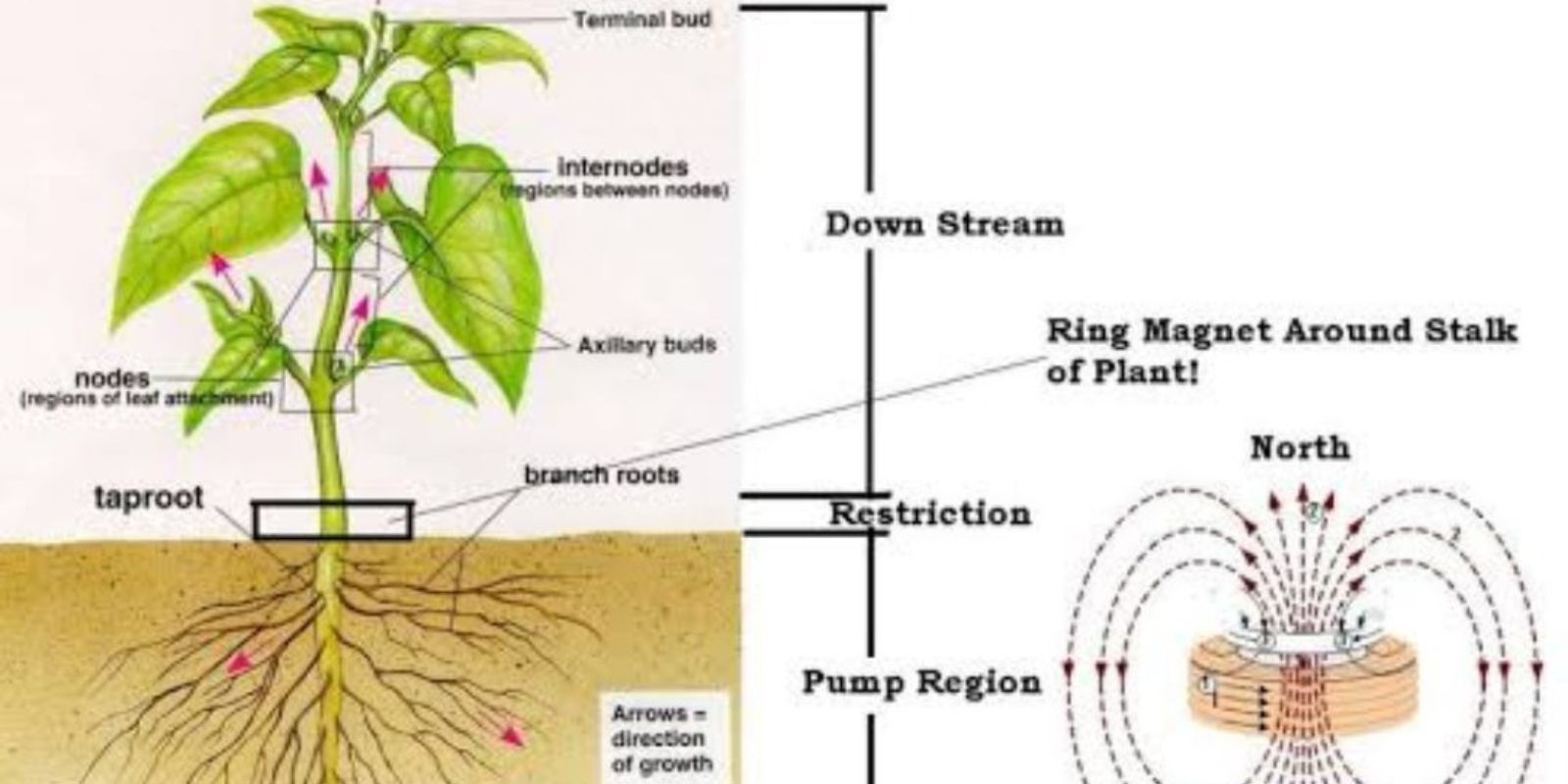Gardening is a field of endless possibilities and experimentation, and one intriguing practice that has gained attention is the use of magnets in plant care. While magnets are typically associated with physics and technology, their application in horticulture has sparked curiosity and debate among scientists and gardeners alike. Can magnets truly influence plant growth? What mechanisms might be at play? Let’s delve into this fascinating topic to understand how placing a magnet in a pot could affect plants.
The Science Behind Magnets and Plant Growth
Magnets generate a magnetic field, a force that can influence water, soil particles, and even biological systems. When introduced into a plant’s growing environment, this field may interact with various processes, such as:
- Water Molecule Alignment: Magnets can align water molecules, making them more structured and potentially more absorbable by plant roots.
- Nutrient Uptake: Magnetic fields may stimulate soil particles to release nutrients more efficiently, enhancing root absorption.
- Cellular Activity: Studies suggest that magnetic fields can accelerate cellular activity and metabolic processes in plants.
- Seed Germination: Some experiments have shown that magnetic fields can improve seed germination rates and vigor.
How to Use Magnets in Plant Care
If you’re curious about trying this method in your garden, here’s a step-by-step guide:
1. Select the Right Magnet
- Use a small, durable magnet that is non-toxic and resistant to rust.
- Avoid magnets with sharp edges to prevent damage to the roots.
2. Placement in the Pot
- Place the magnet near the plant’s roots but not directly in contact with them to avoid interference with delicate root systems.
- Bury the magnet about 2-3 inches deep in the soil for optimal exposure to the root zone.
3. Watering with Magnetized Water
- Some gardeners take it a step further by using magnetized water—water passed through a magnetic field—which is believed to enhance hydration and nutrient delivery.
Potential Benefits of Using Magnets in Gardening
- Improved Seed Germination
Studies indicate that magnetic fields can increase the germination rate of seeds by activating enzymes and hormones essential for growth. - Enhanced Root Development
Roots exposed to a magnetic field may grow faster and deeper, allowing plants to access more nutrients and water. - Increased Nutrient Absorption
Magnets may stimulate soil particles, releasing nutrients that are more readily absorbed by plant roots. - Stronger Plant Growth
Magnet-treated plants often exhibit stronger stems, lush foliage, and vibrant flowers, possibly due to improved metabolic activity. - Resistance to Stress
Magnetic fields could make plants more resilient to environmental stress, such as drought, temperature fluctuations, and diseases.
Real-Life Experiments and Findings
1. Academic Studies
Numerous studies have explored the effects of magnetic fields on plants:
- A study published in Plant Science found that seeds exposed to magnetic fields showed enhanced germination and vigor.
- Research from the Journal of Environmental Biology revealed that plants treated with magnetized water exhibited better growth rates.
2. Gardener Experiences
Many gardeners who’ve experimented with magnets report noticeable improvements in plant health, including:
- Faster growth of vegetables like tomatoes and cucumbers.
- Increased yield in fruiting plants such as peppers and strawberries.
- Healthier foliage in ornamental plants.
Possible Downsides and Limitations
While the results of using magnets in gardening are promising, there are a few points to consider:
- Limited Research: Although studies exist, more large-scale research is needed to confirm the effects of magnets on plant growth.
- Variable Results: Not all plants respond to magnets in the same way. Some may show significant growth, while others remain unaffected.
- Over-Reliance: Magnets are not a substitute for good gardening practices such as proper watering, fertilizing, and pest management.
Best Plants for Magnetic Experiments
Certain plants are more responsive to magnetic treatment. Try experimenting with:
- Vegetables: Tomatoes, cucumbers, lettuce.
- Herbs: Basil, mint, coriander.
- Flowers: Marigolds, petunias, sunflowers.
- Fruiting Plants: Strawberries, peppers, citrus.
How to Conduct Your Own Experiment
- Set Up Two Pots: Plant the same species in two identical pots with similar soil and watering conditions.
- Add a Magnet: Place a magnet in one pot, while leaving the other as a control.
- Monitor Growth: Record differences in germination, height, leaf size, and overall health over a few weeks.
- Document Results: Share your findings with gardening communities to contribute to the growing body of knowledge.
Magnetic Gardening in History and Culture
The concept of using magnetic forces in agriculture isn’t new. Ancient civilizations like the Egyptians reportedly observed the effects of magnetic stones on plant growth. In modern times, magnetic field experiments have been applied to both small-scale gardening and large-scale agriculture, with varying results.
Practical Applications Beyond the Garden
The potential of magnetic fields isn’t limited to gardening:
- Hydroponics: Magnetic water is being used in soilless farming to boost plant growth.
- Agriculture: Magnetic treatment is being studied to improve crop yields on a large scale.
Conclusion: A Fascinating Gardening Experiment
Placing a magnet in a pot might sound unconventional, but it opens the door to a world of scientific discovery and gardening innovation. Whether you’re a seasoned gardener or a curious beginner, this simple experiment can add a touch of excitement to your gardening routine.
Why not give it a try? Share your results with fellow plant lovers and join the growing community of magnetic gardening enthusiasts!

